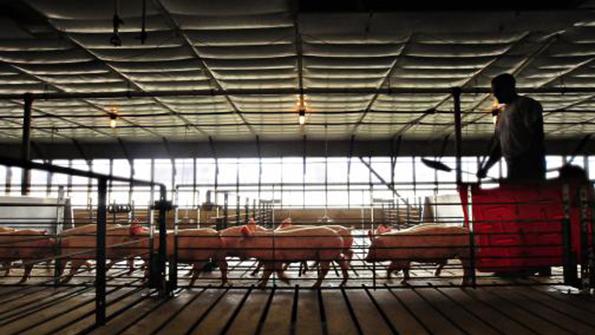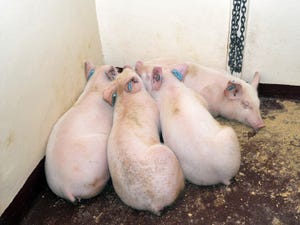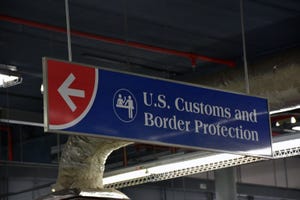FDA begins on-farm inspections with VFD pilot project
A U.S. Food and Drug Administration pilot project may be bringing FDA inspectors to farms leading up to new antibiotic regulations going into effect Jan. 1 under new Veterinary Feed Directive rules.
July 25, 2016

Although the much-talked about new antibiotic regulations do not go into effect until Jan. 1, U.S. pork producers may see inspectors from the U.S. Food and Drug Administration visit their farms any time now under the agency’s new Veterinary Feed Directive Field Pilot Project. According to the FDA, the project is focusing on education, rather than enforcement or compliance.
“The pilot will help us identify areas where there may be lack of clarity about the upcoming regulations so that we can help inform veterinarians, producers and feed mills of any adjustments they may need to make in order to be in compliance with updated regulations,” says William Flynn, deputy director for science policy in FDA’s Center for Veterinary Medicine.
The program is designed to help educate the FDA’s auditors as they prepare for the new antibiotic changes. Unlike the beef and dairy industries, the pork industry has had a VFD requirement for more than a decade for tilmicosin, florfenicol and avilamycin. That’s why the agency is seeking to work with pork producers, swine veterinarians, feed mill operators and farm retailers who currently handle and use feed containing those antibiotic compounds to ensure that they are in compliance with the existing regulation.
According to the FDA, the parts of the inspection tool come directly from the new VFD regulation itself and is covered in the VFD brochures and fact sheets that the agency has developed for producers, veterinarians and distributors. As always, producers, veterinarians and feed mills should make sure they’re in full compliance with the existing VFD rule, which includes the proper information and record-keeping.
In December 2013, the FDA published Guidance #213, which calls on animal drug sponsors of approved medically important antimicrobials, administered through medicated feed or water, to remove growth promotion uses from their product labels. It also calls for them to bring the remaining therapeutic uses of these products under the oversight of a veterinarian by the end of December 2016.
“On the FDA side of the equation, inspectors must clearly understand the need to abide by on-farm biosecurity protocols to help ensure that potential disease transmission is minimized,” says Jennifer Wishnie, Pork Checkoff’s director of producer and public health. “Everyone must do what’s necessary to safeguard animal and human health, so producers and their veterinarians should clearly explain what biosecurity procedures are needed before farm access is granted to anyone.”
Starts with feed mill/retailer
FDA says a farm visit starts with FDA pilot program inspectors going to feed distributors. There they will examine three randomly selected VFD forms, picking one form to follow back to the veterinarian and forward to the producer.
The FDA has shared the elements that are included in the inspection tool for the investigators to use to ensure that the required items appear on the VFD form. Here are the main items producers should know how to answer prior to an inspector visiting their farm. (See complete list here.)
Veterinarian’s name, address and telephone number
Client’s (producer’s) name, business or home address and telephone number
Premises where the animals specified in the VFD order are located
Date the VFD order was issued
Expiration date of the VFD order
Is the name of the VFD drug or drugs identified on the form?
Species and production class of animals to be fed the VFD feed
Approximate number of animals to be fed the VFD feed by the expiration date of the VFD order
Reason the VFD order was issued (the indication)
Level of VFD drug in the feed and duration of use
Withdrawal time, special instructions and cautionary statements necessary to use the drug according to its approved labeling
The number of reorders (refills) authorized, if permitted by the drug’s approval, conditional approval or index listing
This required statement: “Use of feed containing this veterinary feed directive (VFD) drug in a manner other than as directed on the labeling (extra-label use), is not permitted.”
Affirmation of intent for combination VFD drugs
Veterinarian’s electronic or written signature
Pork Checkoff provides tools
For more than a year, the National Pork Board has been offering a host of pork-specific information related to the upcoming antibiotic regulations. The creation of the Checkoff’s Antibiotic Resource Center found at www.pork.org/antibiotics is a clearinghouse of information and how-to steps for producers to prepare for the changes. The comprehensive biosecurity protocols also serve as a good resource for producers to review prior to any off-farm visitors.
“We hope that pork producers will take the opportunity to learn more about the upcoming antibiotic changes if they haven’t already done so,” Wishnie says. “We know that we’re reaching many producers through our ‘Don’t Wait … Be Ready!’ education campaign and with our many practical, on-farm resources. However, we’re committed to continued outreach to help ensure that all producers are aware of what’s changing with antibiotic use and to being fully prepared. It’s all about doing what’s best for people, pigs and the planet.”
You May Also Like



